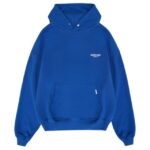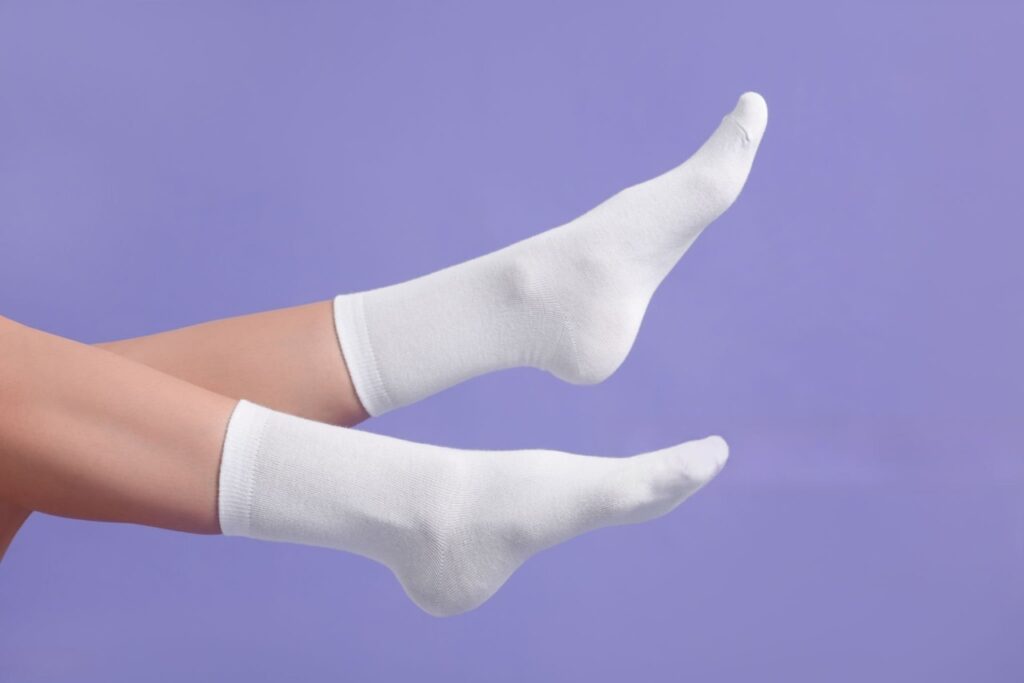Fast fashion has created a disposable mindset in the clothing industry, from the clothing we wear to what we wear on our feet. Socks, often viewed as minor accessories, are regularly produced with low-quality materials, worn a few times, and tossed in the trash. The result is waste, both environmental and financial.
But there’s a better way. Investing in durable socks made from organic materials reduces waste, cuts long-term costs, supports healthier ecosystems, and gives consumers a better product.
The Problem with Cheap, Disposable Socks
The most inexpensive socks are made from synthetic materials like polyester or nylon. These fibers are petroleum-based, meaning they’re derived from fossil fuels. They don’t break down easily and decompose for hundreds of years. Every time they’re washed, they release microplastics into water systems.
Beyond the environmental concerns, cheap socks don’t last. They lose shape, wear thin at the heel and toe, and stretch out quickly. That’s by design. The more they break down, the more people buy. It’s a cycle that benefits manufacturers and fills landfills.
Add the impact of dyes, chemical treatments, and energy-intensive manufacturing processes, and you have a product that harms the environment from start to finish.
Why Durable, Organic Socks Are Better
Breaking out of that wasteful cycle starts with changing how we think. The best socks are built to last, made with materials that are both natural and strong, and manufactured with the environment in mind.
Durable socks are constructed to resist wear and tear over time. This includes reinforced heels and toes, tighter stitching, and more potent fiber blends. Instead of losing shape after a few washes, they hold up through repeated wear.
Organic socks go further by using natural fibers grown without harmful chemicals. Organic cotton, hemp, and bamboo are standard materials. They’re biodegradable, renewable, and grown with significantly less water and no synthetic pesticides or fertilizers.
Here’s how switching to durable, organic socks makes a real impact:
1. Less Waste in Landfills
When socks last longer, fewer end up in the trash. A single pair of durable socks can outlast multiple pairs of disposable ones. Multiply that over a year, and the savings in material and waste are significant.
And because organic socks break down naturally, they won’t sit in landfills for decades if they do get discarded.
2. Lower Long-Term Costs
At first glance, organic and durable socks may cost more than bulk synthetic packs. But over time, they save money. You don’t need to replace them as often, and the better fit and materials mean fewer blisters, less discomfort, and more satisfaction with each wear.
Most consumers who switch to high-quality socks buy less frequently, choose more carefully, and value what they own more.
3. Healthier for Skin and Feet
Synthetic materials trap heat and moisture, creating an ideal environment for bacteria and fungi. This can lead to odor, irritation, or even infections like athlete’s foot.
In contrast, organic socks made from natural fibers are breathable and moisture-wicking. They help regulate temperature, keeping feet cool in the summer and warm in the winter. They also reduce the risk of skin irritation, especially for people with sensitivities or allergies.
Durable socks also tend to be more thoughtfully designed, with features like arch support, cushioned soles, and seamless toes that help prevent pressure points or blisters. Your whole day goes better when your socks fit well and stay in place.
4. Support for Sustainable Farming
Organic farming avoids synthetic pesticides and fertilizers, protecting nearby water sources, preserving soil health, and supporting biodiversity. When you buy organic socks, you’re supporting a system that respects the planet and the people working the land.
Hemp, for example, is a fast-growing, low-impact crop that requires little water and naturally resists pests. It enriches the soil rather than depleting it. Choosing hemp-based socks is a great way to minimize environmental impact without sacrificing durability.
5. A Smarter Consumer Choice
Switching to durable socks and organic socks is more than a fashion choice. It’s a values-based decision. It says you care about reducing waste, supporting sustainable practices, and investing in products that last.
The Takeaway
We’re surrounded by fast fashion that encourages constant consumption and quick disposal. But when it comes to essentials like socks, it pays to choose better. Durable socks reduce waste, save money, and feel better on your feet. Organic socks protect the environment and promote healthier skin.
The case is clear. Stop buying socks that fall apart. Start investing in socks that last.
- The Environmental Case For Switching To Durable, Organic Socks
- Fast fashion has created a disposable mindset in the clothing industry, from the clothing we wear to what we wear on our feet.
- clothing
Related posts:
 Love That Lasts: The Rise of Lab Diamond Wedding Bands mined diamonds
Love That Lasts: The Rise of Lab Diamond Wedding Bands mined diamonds
 Why Aimé Leon Dore Is More Than Just a Brand – It’s a Lifestyle Choice
Why Aimé Leon Dore Is More Than Just a Brand – It’s a Lifestyle Choice
 Nofs and Nofs Signature Tracksuit Nofs and Nofs Signature Tracksuit
Nofs and Nofs Signature Tracksuit Nofs and Nofs Signature Tracksuit
 The Ultimate Guide to Men’s Dress Hats: Elevate Your Style with Timeless Elegance
The Ultimate Guide to Men’s Dress Hats: Elevate Your Style with Timeless Elegance
 Why Every American Wants a Awful Lot of Cough Syrup Clothing
Why Every American Wants a Awful Lot of Cough Syrup Clothing
 Disclosing NOFS Clothing: A Modern Time in Streetwear Fashion:
Disclosing NOFS Clothing: A Modern Time in Streetwear Fashion:
 Why Every Streetwear Fan Owns a Represent Hoodie Now in 2025
Why Every Streetwear Fan Owns a Represent Hoodie Now in 2025
 Different Types of Jeans for Women: Finding Your Perfect Fit
Different Types of Jeans for Women: Finding Your Perfect Fit







